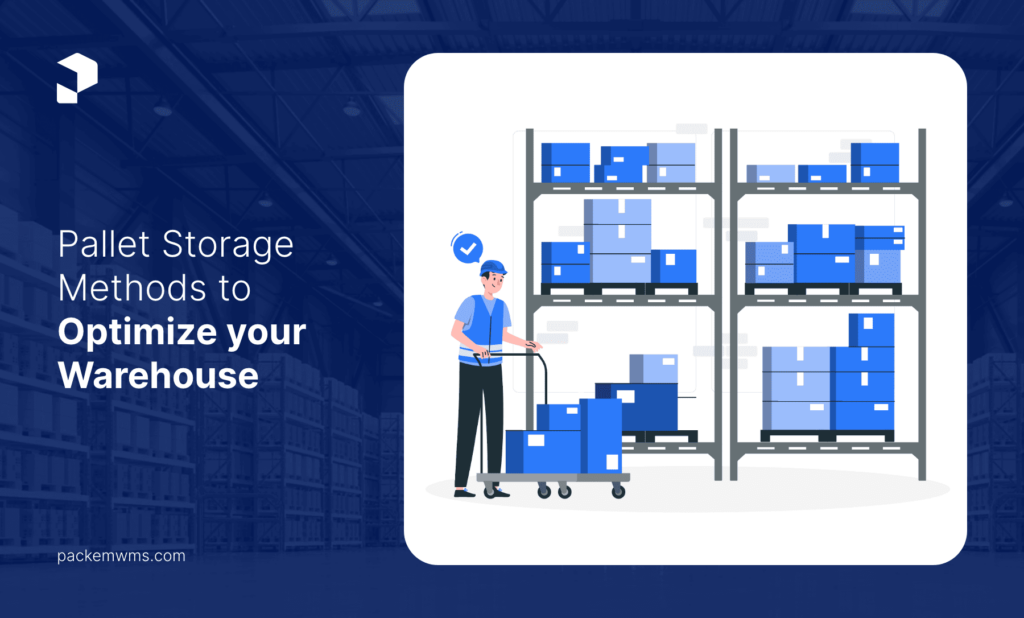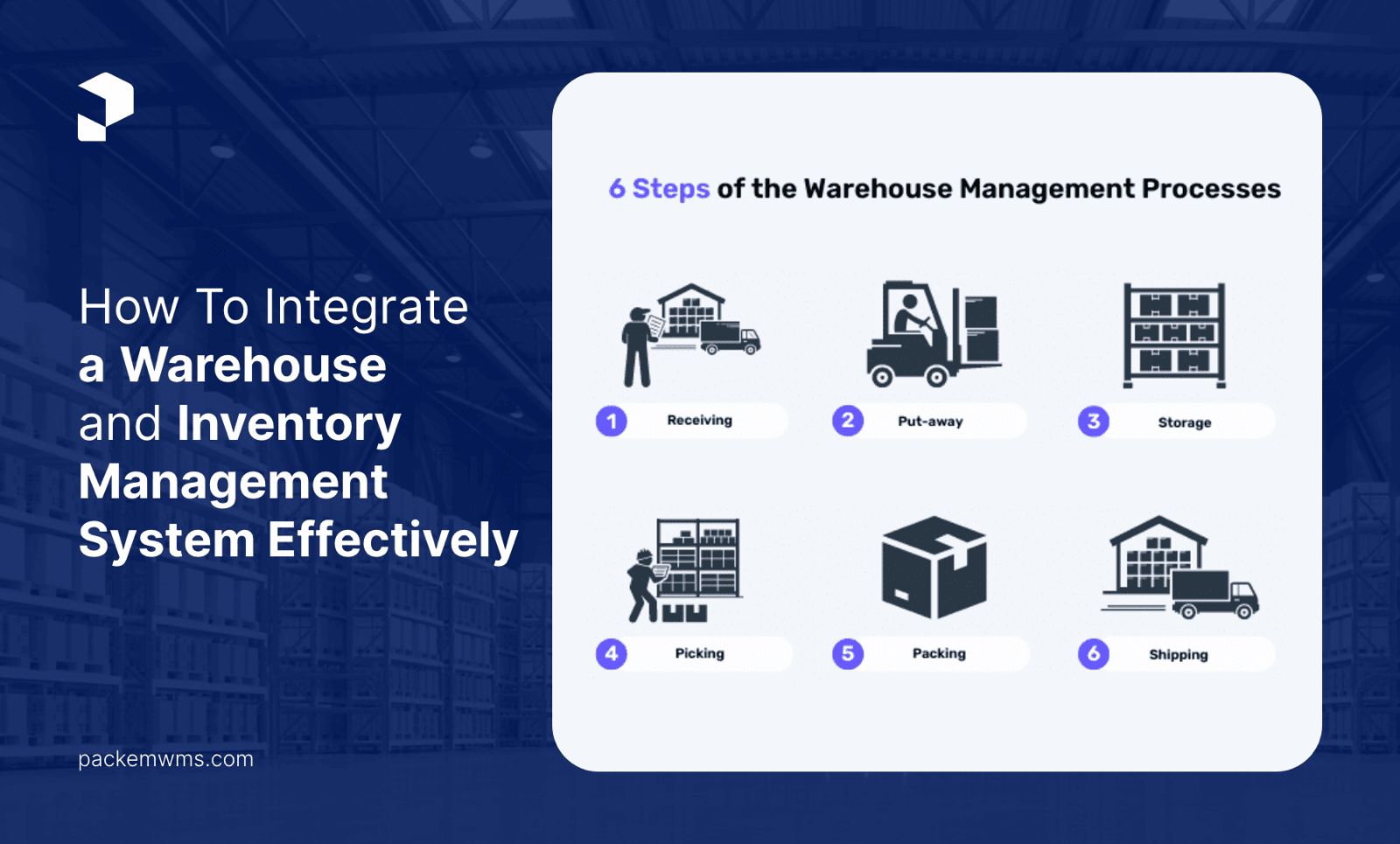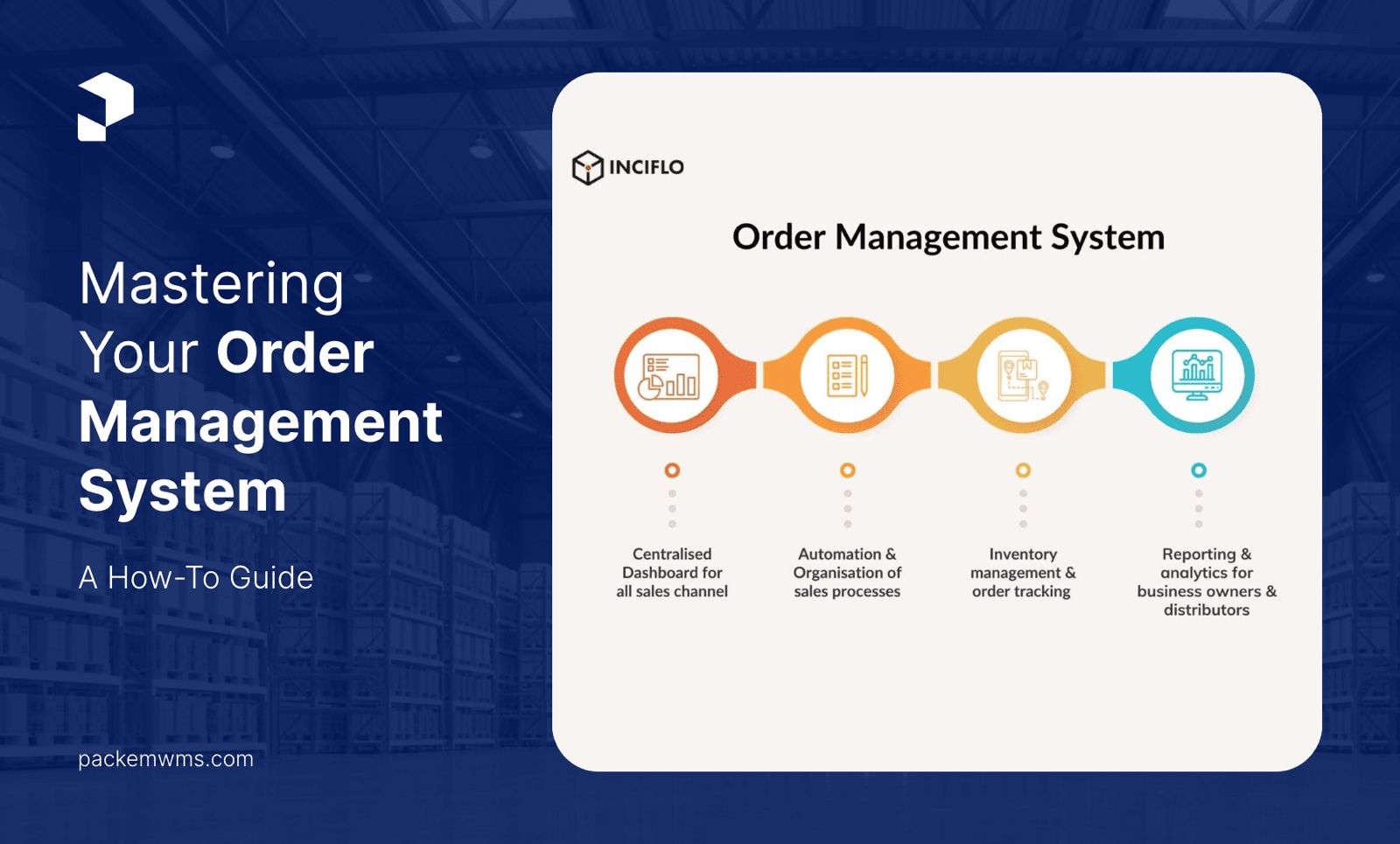In order to strategically approach the idea of efficiency, business owners need to zoom out and consider the big picture of their operations. By looking at overarching patterns, you will see that ‘wasted time’ doesn’t mean your employees are moving too slowly or getting distracted. More often than not, wasted time is a symptom of operational processes that are not serving the business’ function.
How can this be resolved? Through enhanced organization and streamlining at every step. Using Warehouse Management Software (WMS) like PackemWMS, managers can automate and perfect their processes. But, coinciding with this technical implementation is a need to ensure that the physical infrastructure of the warehouse is operating at peak performance, too.
In this article, we will dive deep into one element of those physical operations—pallet organization—and discuss what methods you can use and how they can work together with a WMS to best serve your business.
Why Does Pallet Storage Matter?
Let’s face it, storage is limited, and space is expensive. It’s essential to make the most of your space so you can take your warehouse performance to the next level without having to make further investments in a larger facility. Organizing your pallet inventory will allow you to take stock of your layout and needs to then optimize your space and store as much as possible.
But it’s not just about packing in as much inventory as possible. Setting up an organizational system has to have logic that allows your processes to run smoothly.
By setting up the right system, you can ensure your storage is intuitive to your workers, keep operations running smoothly by avoiding chaos, reduce the amount of time workers spend traveling throughout the warehouse, and ease the retrieval process to shorten the amount of time it takes to fulfill an order.
Those immense possibilities explain why the pallet rack market is expected to grow to over $13 billion by 2026.
Why Does WMS Optimization Matter?
Leveraging the right warehouse management system is essential because it increases efficiency and reduces errors. With automated, digitized features, the room for human error decreases immensely, and at the same time, orders and inventory are processed faster than any human could achieve.
Plus, as vendors increase their online sales (totaling a possible $560+ million by 2024), it’s important to have inventory management for e-commerce that is integrated and updated.
Without a WMS, and proper pallet storage managers will spend more on labor hours and misplaced inventory. A WMS can essentially act as an element of operations management by increasing speed and accuracy at the same time.
Experience the simplest inventory management software.
Are you ready to transform how your business does inventory?
How Do They Work Together?
Although a WMS is powerful and essential for your management, it cannot work alone. Tracking and streamlining items that are stored in a chaotic format can only get you so far. Once you see how much organization a WMS introduces into your facility, you will notice the elements of your processes that are holding you back.
To ensure you keep your physical organization up to speed, assess your pallet inventory status and needs and employ one of the methods discussed below. WMS tech best practices work best when they are partnered with physical solutions.
5 Methods To Use When Organizing Your Pallet Storage
1. Block stacking
This is the most basic method because it requires no racks—just an open floor space. With block stacking, you will simply stack the pallets onto each other, creating columns and aisles using the pallets themselves.
You will just need to consider each pallet’s weight and condition to make sure they are stacked in a structurally sound way. The downsides? This method uses a Last in First Out (LIFO) approach and can produce ‘honeycombing’ where you have empty spaces you can’t fill until you have cleared out the whole aisle.
2. Racks – Single or double depth
Single-depth racks are one of the most common methods of pallet organization because they can be cheap to implement and allow you to access every pallet all the time.
This means it’s easy to get started and can help you set up an optimization system quickly. Double racks offer 2x the storage but render the back row inaccessible, so it is only viable if you have items with a long shelf life.
3. Drive-in
This method is only possible for some warehouse layouts and uses a LIFO approach, so it only works for items with a shorter shelf life. The drive-in organization is a dense way to store your pallets because it doesn’t need any aisle space, as the forklift drives right into the vacant spots in the racks.
4. Push back rack
This, too, is a LIFO method, but with push-back racks, the carts move along rails. This allows for high-density storage and a single-aisle design but less depth than a drive-in method, with a maximum capacity of 4-5 pallets deep. Plus, it’s more expensive to implement, so it’s not an option in many cases.
5. Pallet/Gravity flow rack
This is the most expensive option, but unlike many others, it uses a FIFO method which enables shorter shelf-life items to be optimized. Here, a conveyor belt moves pallets from one end of the rack to another, and the empty space gets replaced by new pallets.
How PackemWMS can bring your pallet organization to the next level
PackemWMS can help your warehouse achieve a new level of efficiency by working in concert with one of the recommended pallet organization methods. With features like inventory tracking, receiving automation, automatic replenishments, e-commerce integration, and more, it can help you perfect your accuracy, fulfillment, speed, and efficiency by reducing errors and wasted time.
Nearly 77% of organizations are seeking a plan to maximize data-driven outcomes, and digitizing your warehouse management is the best way to track daily inventory. It can help you get ahead of supply chain issues and follow your orders and supply levels in real-time. You will be able to backtrack when an error does occur and resolve it right away.
Contact us today to schedule a consultation with our warehouse management system developers.




